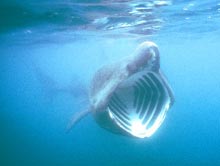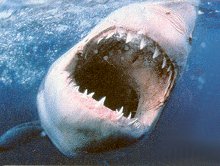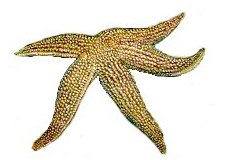Blue Shark
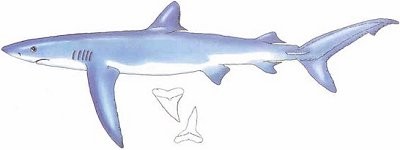
Prionace glauca
Size:
to 11 ft,
reportedly to 21ft
Habitat:
open ocean
Notes:
dangerous
A fast-swimming oceanic shark, these are colored vivid blue in life, but quickly fade to gray in death. The Blue shark is described as a persistent and dangerous stalker and is often found in great numbers. This is the shark most likely seen in caged shark dives off Rhode Island and is probably the commonest shark in our offshore waters during the summer months. Other identifying features of the Blue shark are the extremely long pectoral fins and relatively slim body ( compared to those below ) with very unequal upper and lower tail lobes.

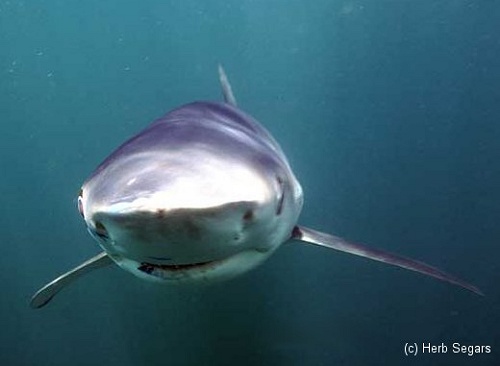

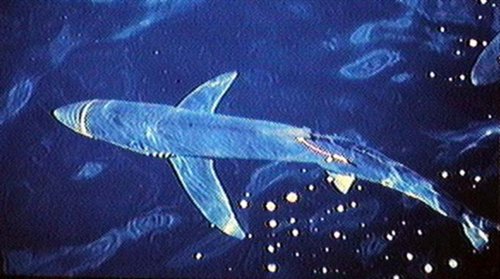
( You may notice that it has a fishing leader trailing from its mouth. )


